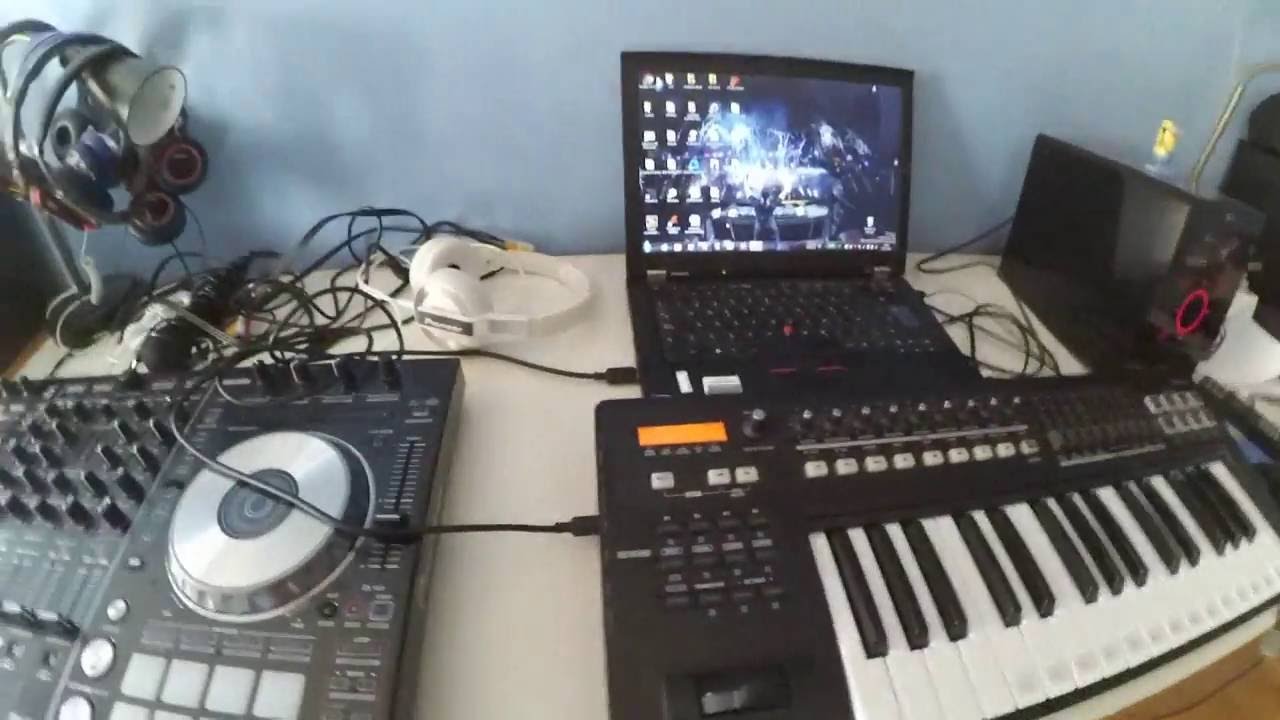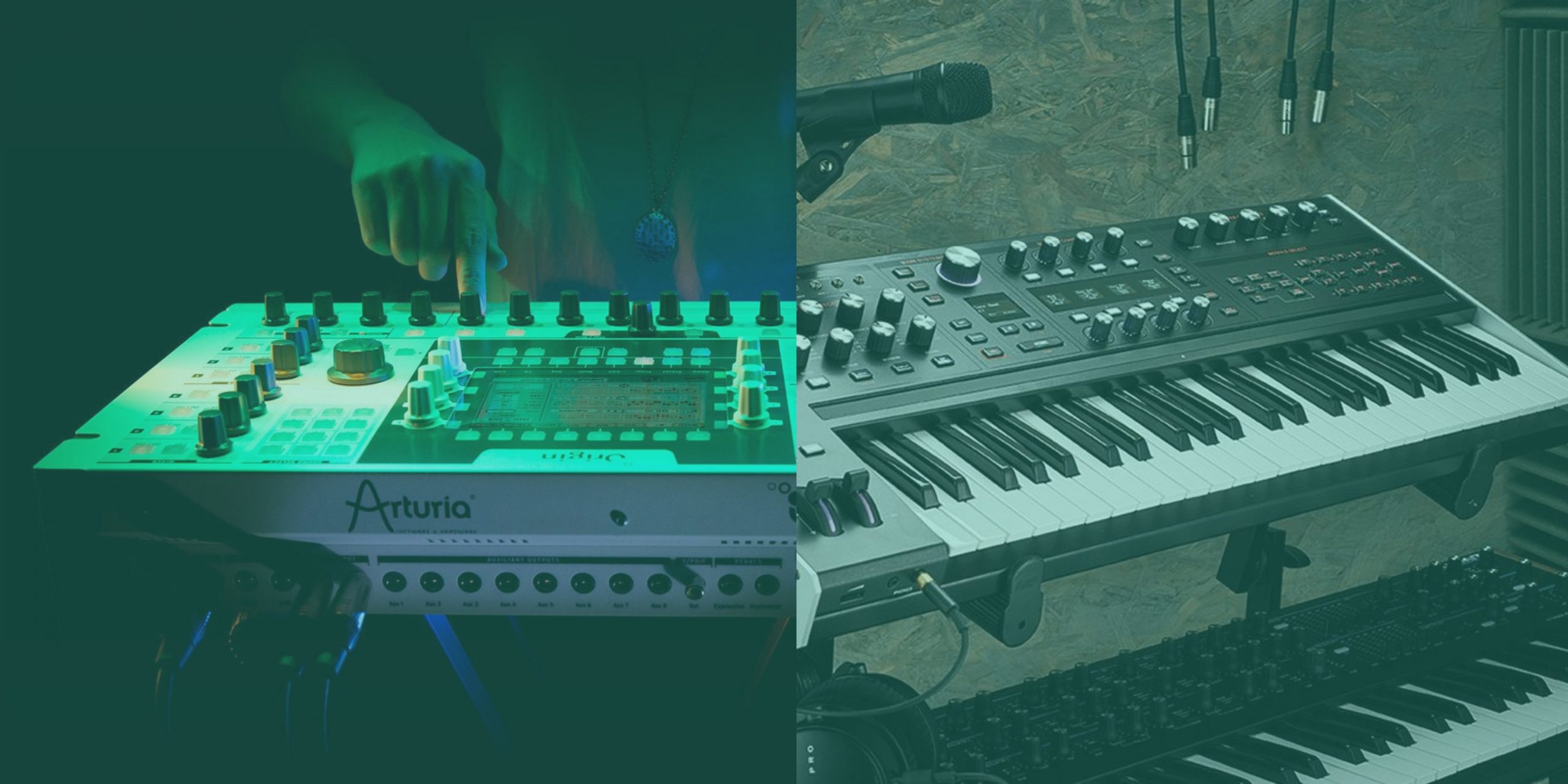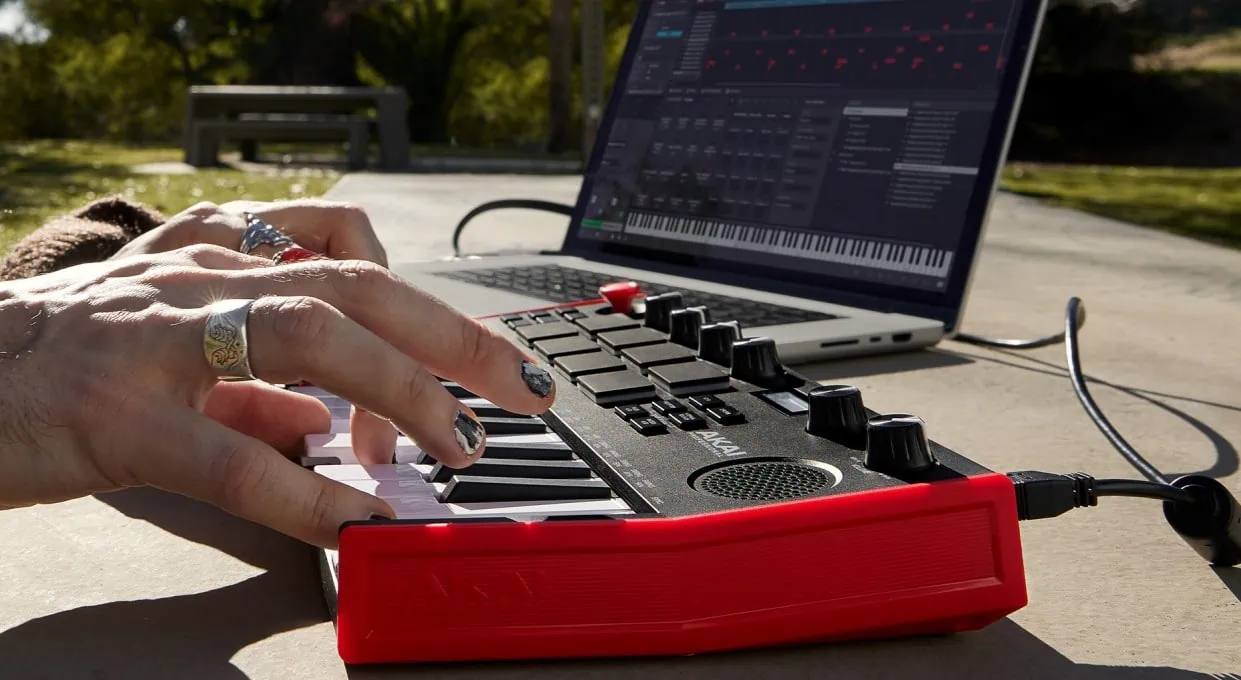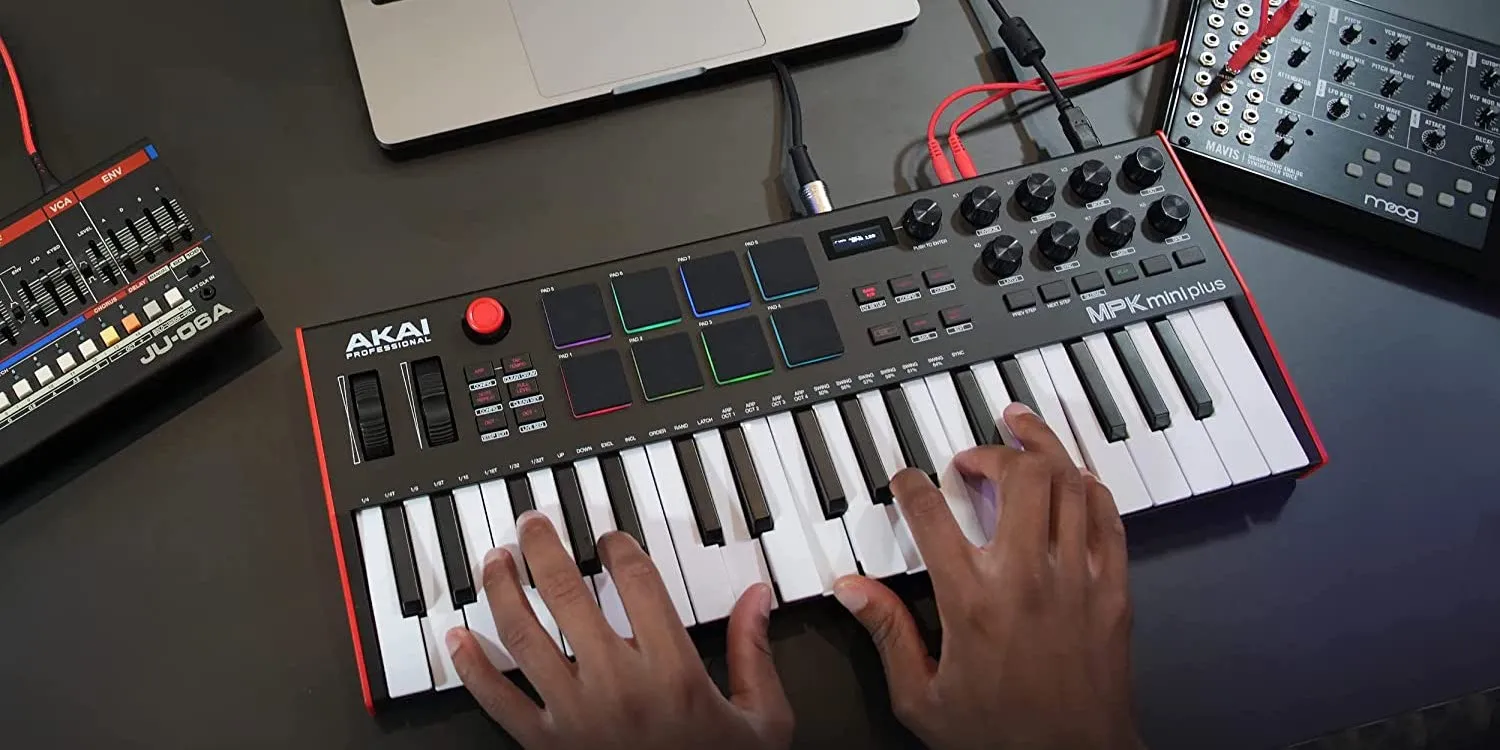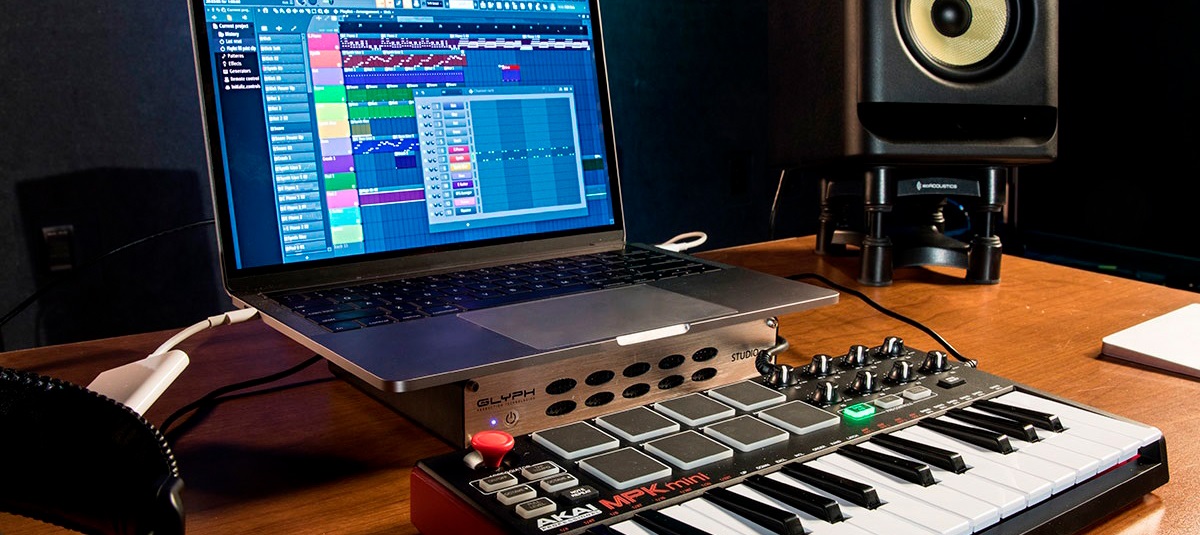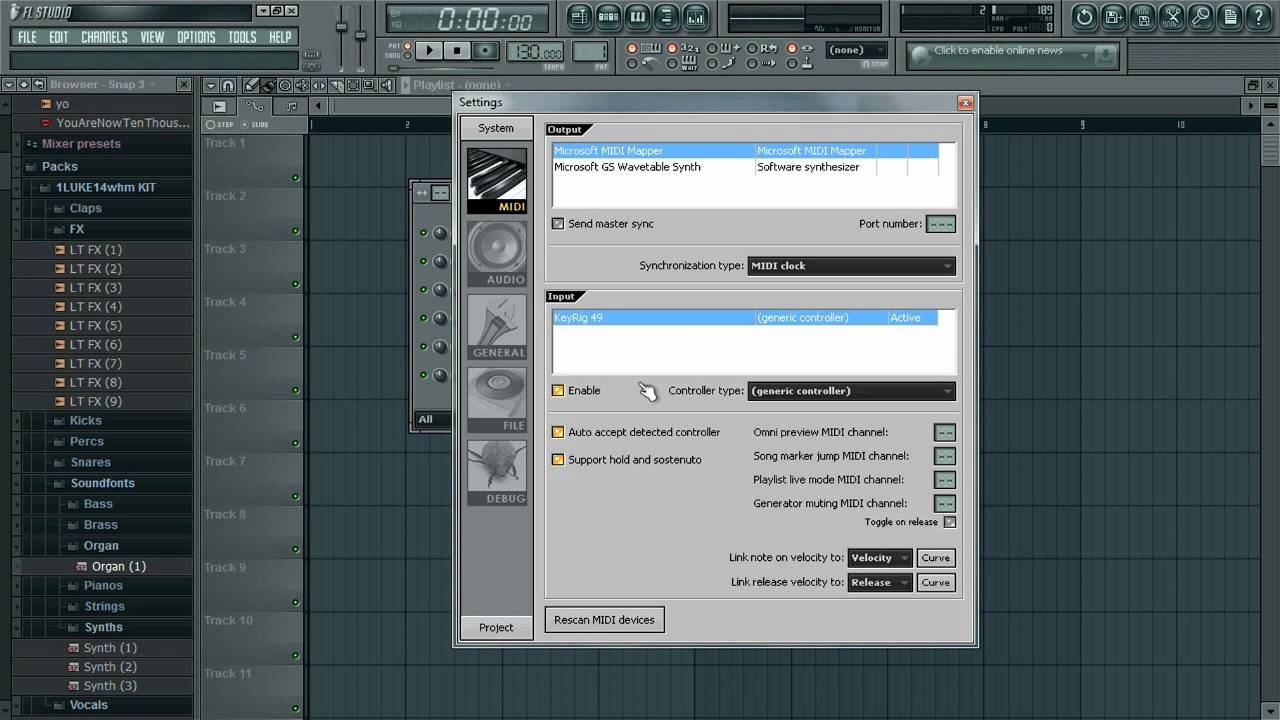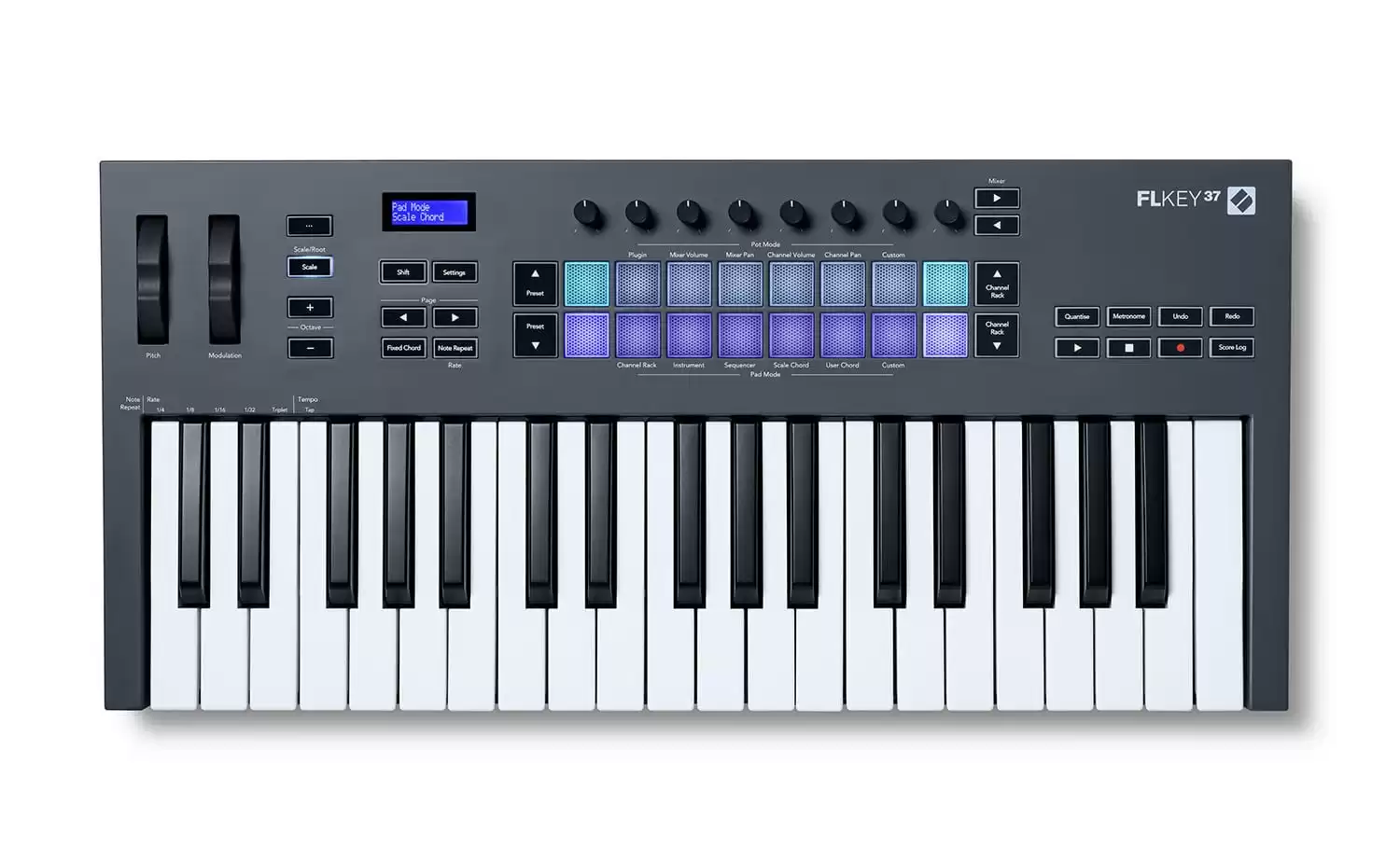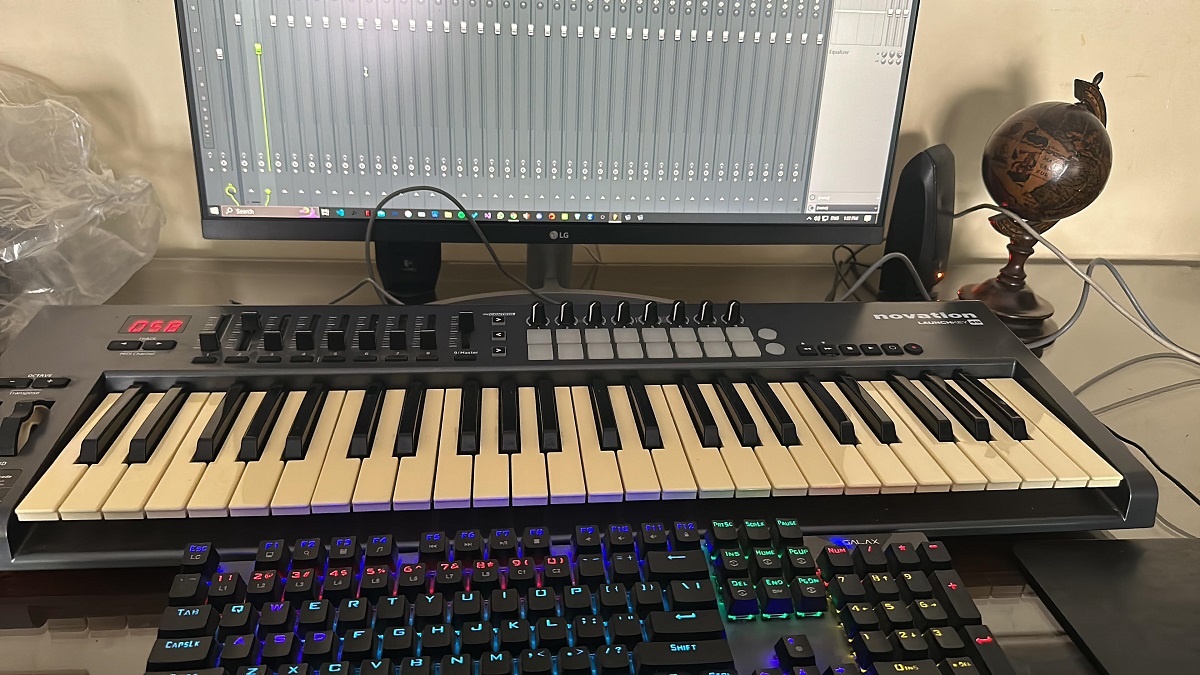Introduction
Welcome to this guide on setting up a MIDI keyboard in FL Studio 11. Integrating a MIDI keyboard into your music production workflow can greatly enhance your creative process, allowing for more expressive and intuitive control over your virtual instruments and software. FL Studio 11, a popular digital audio workstation (DAW), provides robust support for MIDI devices, offering a seamless interface for incorporating external controllers into your music-making endeavors.
Whether you’re a seasoned producer or just beginning your musical journey, understanding how to set up and utilize a MIDI keyboard in FL Studio 11 can significantly elevate the quality and depth of your compositions. By following the steps outlined in this guide, you’ll be able to harness the full potential of your MIDI keyboard within FL Studio 11, unlocking a new realm of musical possibilities.
From establishing the physical connection between your MIDI keyboard and computer to configuring FL Studio 11 to recognize and respond to MIDI input, this comprehensive walkthrough will equip you with the knowledge and skills necessary to seamlessly integrate your MIDI keyboard into your music production environment. Let’s dive into the steps and explore the exciting world of MIDI integration in FL Studio 11.
Step 1: Connecting the MIDI Keyboard to Your Computer
Before delving into the software configurations, the first step in setting up your MIDI keyboard in FL Studio 11 involves establishing a physical connection between the keyboard and your computer. Follow these simple steps to ensure a seamless connection:
- USB Connection: Many modern MIDI keyboards feature USB connectivity, allowing for a direct plug-and-play connection to your computer. Simply connect the USB cable from the MIDI keyboard to an available USB port on your computer. Once connected, your computer should automatically recognize the MIDI keyboard as a new device.
- MIDI Interface: If your MIDI keyboard utilizes traditional MIDI connectors (5-pin DIN), you’ll need a MIDI interface to connect it to your computer. Connect the MIDI OUT port of your keyboard to the MIDI IN port of the interface using a standard MIDI cable. Then, connect the MIDI interface to your computer using a USB cable or MIDI-to-USB adapter, depending on the interface’s connectivity options.
Once the physical connection is established, ensure that your MIDI keyboard is powered on and ready to transmit data to your computer. With the hardware connection in place, you’re now ready to move on to the next step in configuring FL Studio 11 to recognize and interact with your MIDI keyboard.
Step 2: Configuring FL Studio 11 for MIDI Input
Once your MIDI keyboard is physically connected to your computer, the next crucial step is to configure FL Studio 11 to recognize and respond to MIDI input. Follow these steps to set up FL Studio 11 for MIDI integration:
- Launch FL Studio 11: Open FL Studio 11 on your computer to begin the configuration process. Once the software is running, navigate to the ‘Options’ menu at the top of the screen.
- Access the MIDI Settings: Within the ‘Options’ menu, select ‘MIDI Settings’ to access the MIDI configuration panel. This is where you’ll be able to manage and assign MIDI input devices for use within FL Studio 11.
- Enable MIDI Input: In the MIDI settings panel, ensure that the ‘Enable’ checkbox for your MIDI keyboard is selected. This action allows FL Studio 11 to receive MIDI input from your connected keyboard.
- Configure MIDI Ports: If your MIDI keyboard uses a USB connection, it should appear in the list of input devices within the MIDI settings panel. Select the appropriate MIDI input port associated with your keyboard to establish the communication link between the hardware and FL Studio 11.
- Set the MIDI Channel: Depending on your MIDI keyboard’s capabilities, you may need to specify the MIDI channel through which it will communicate with FL Studio 11. This can typically be configured within the MIDI settings panel by selecting the appropriate MIDI channel for your keyboard.
With these configuration steps completed, FL Studio 11 is now primed to receive MIDI input from your keyboard. This seamless integration sets the stage for harnessing the expressive capabilities of your MIDI keyboard within the FL Studio 11 environment.
Step 3: Assigning MIDI Channels and Instruments
After configuring FL Studio 11 to receive MIDI input from your keyboard, the next step involves assigning MIDI channels and instruments within the software. This process allows you to map specific MIDI channels to virtual instruments and control various parameters of your music production. Follow these steps to assign MIDI channels and instruments in FL Studio 11:
- Load a Virtual Instrument: Within FL Studio 11, load the virtual instrument you wish to play using your MIDI keyboard. This can be achieved by accessing the ‘Browser‘ panel, selecting a virtual instrument from the available options, and dragging it into the Channel Rack or Playlist.
- Assign a MIDI Channel: Once the virtual instrument is loaded, click on it to select it. In the Channel settings, locate the ‘MIDI’ section and choose the desired MIDI channel for the instrument. This MIDI channel should correspond to the MIDI channel your keyboard is set to transmit on.
- Configure Additional Parameters: Depending on your creative preferences and the specific capabilities of the virtual instrument, you can further configure parameters such as velocity sensitivity, modulation, pitch bend, and other MIDI control options to tailor the instrument’s response to your playing style.
- Test the Setup: With the MIDI channel and instrument assigned, test the setup by playing your MIDI keyboard. You should hear the sound of the virtual instrument responding to your key presses, demonstrating successful MIDI integration within FL Studio 11.
By following these steps, you can effectively assign MIDI channels and instruments within FL Studio 11, enabling seamless communication between your MIDI keyboard and virtual instruments. This integration empowers you to explore a wide array of sounds and textures, all controlled by the expressive capabilities of your MIDI keyboard.
Step 4: Testing Your MIDI Keyboard in FL Studio 11
Once you have connected your MIDI keyboard to FL Studio 11 and configured the software to recognize MIDI input, it’s essential to test the setup to ensure seamless functionality. Follow these steps to test your MIDI keyboard within FL Studio 11:
- Select a Virtual Instrument: Choose a virtual instrument within FL Studio 11 that you previously assigned to a MIDI channel. This can be a synthesizer, piano, drum kit, or any other instrument available in your production environment.
- Play the MIDI Keyboard: Begin playing your MIDI keyboard to trigger notes and sounds from the selected virtual instrument. As you press the keys on your MIDI keyboard, you should hear the corresponding notes emanating from your computer speakers or connected audio output device.
- Explore Expression and Control: Experiment with the various features and controls on your MIDI keyboard, such as pitch bend, modulation wheels, and velocity-sensitive keys. Observe how these elements influence the sound and performance of the virtual instrument, allowing for expressive and dynamic musical articulation.
- Record MIDI Data: Utilize FL Studio 11’s recording capabilities to capture your MIDI keyboard performance as MIDI data. This allows you to preserve your musical ideas, edit the performance, and integrate it into your music production projects for further refinement.
- Verify Response and Latency: Assess the responsiveness and latency of the MIDI keyboard within FL Studio 11. Ensure that the virtual instrument accurately reflects your playing in real-time, without perceptible delays or inconsistencies in note triggering and dynamics.
By following these testing procedures, you can confirm that your MIDI keyboard is seamlessly integrated into FL Studio 11, providing a responsive and expressive interface for creating and performing music. This hands-on evaluation ensures that your MIDI keyboard functions optimally within the software environment, empowering you to unleash your creativity with confidence.
Conclusion
Congratulations! You have successfully navigated the process of setting up and integrating your MIDI keyboard in FL Studio 11. By following the steps outlined in this guide, you’ve established a seamless connection between your physical MIDI keyboard and the powerful music production environment of FL Studio 11. This integration opens up a world of creative possibilities, allowing you to harness the expressive capabilities of your MIDI keyboard to craft compelling musical compositions.
With your MIDI keyboard now fully integrated into FL Studio 11, you have the ability to explore a diverse range of virtual instruments, control parameters, and recording functionalities, all at your fingertips. Whether you’re a keyboard virtuoso, a budding producer, or an experimental composer, the integration of a MIDI keyboard in FL Studio 11 empowers you to infuse your music with nuance, emotion, and personalized artistry.
As you continue your musical journey, remember to explore the myriad features and capabilities of your MIDI keyboard within FL Studio 11. Experiment with different virtual instruments, delve into MIDI control options, and unleash your creativity through expressive performances and intricate compositions. The seamless integration of your MIDI keyboard in FL Studio 11 serves as a gateway to musical innovation, enabling you to bring your musical visions to life with precision and passion.
Embrace the dynamic synergy between your MIDI keyboard and FL Studio 11, and let your creative instincts guide you as you embark on new musical endeavors. Whether you’re crafting melodic masterpieces, driving rhythms, or atmospheric soundscapes, your MIDI keyboard is now a vital tool in shaping the sonic tapestry of your musical expressions within FL Studio 11.
With the foundation laid for MIDI integration, the stage is set for you to embark on a captivating musical journey, enriched by the harmonious marriage of your MIDI keyboard and the boundless creative potential of FL Studio 11.







